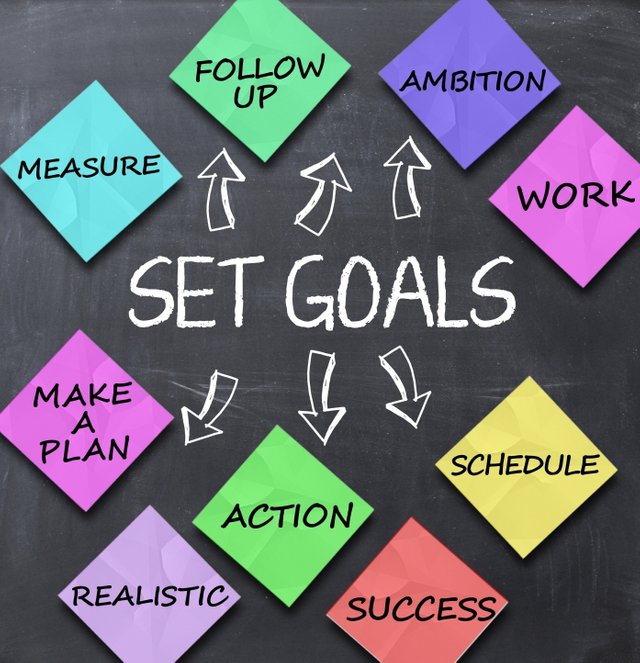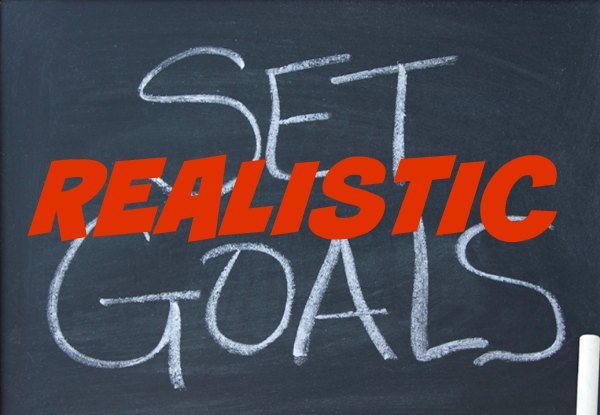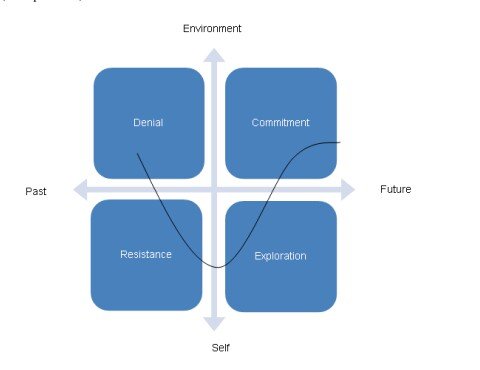Personal Change and Goal Setting
Introduction

A Formula for Making Changes
Another way of looking at motivation and how it is involved in making changes is demonstrated by the formula
C = D x M x P
C stands for Motivation to Change
D stands for Dissatisfaction
M stands for Model
P stands for Process
The translation of the formula is that motivation to change occurs when you have a level of dissatisfaction with the way things are, a model for how you want them to look instead, and a plan or process for getting to that model result. When you are not happy with how things are at the moment, you will want to change them. But unless you have a vision for how you would prefer things to look and a way that you believe will get you there, you are unlikely to be truly motivated to make a change. Think for a moment about what this equation says about change:
• In any case of change, all three elements (D, M, and P) must be present. If any of them are absent (=0), change will be zero.
• When the amount of motivation to change is high, the amount of at least one of the elements on the other side of the equation must be high if the equation is going to balance out (if change is going to be successful).
• Alternatively, if any one of the elements on the right hand side of the equation is high enough, change will eventually be brought about.
The equation means that motivation to change comes from having a level of dissatisfaction with the status quo, a vision for something better, and a plan for how to get there.

You may may have an idea for a change, but if dissatisfaction with the current way of doing things is not there, you’re not going to be motivated to take the steps necessary to make the change happen. If you lack the model for what you want things to look like, you will have nothing to direct your activity towards. And if you have the dissatisfaction and the model idea but no way to get there, how would you even beging to make the change? All three of the elements need to be present for change to take place and be successful.
The Process of Change
The general process of change that an individual goes through, from denial, to resistance, to exploration, to commitment.
Denial

The process begins by the change being identified or suggested. There may be a general attitude of denial.Thoughts arise such as ‘this isn’t necessary,’ ‘the way I’ve always done things works just fine.’ In this way, the focus is on the past. You have a kind of ‘if it’s not broke, don’t fix it,’ attitude. You might still be in denial of the need for the change. Other emotions you might experience could include:
•Shock
•Discouragement
•Disbelief
•Anxiety
•Depression
•Grieving
•Uncertainty
•Immobilization
Resistance

At this point you might feel resistant to the change. You might start wondering what you are doing and your motivation to make the change will be absent or will lapse. It will take being attentive to what is happening inside your head in order to successfully overcome your resistance. Some of the behaviors or ‘symptoms’ you might experience at this stage could include:
•Suffering, anger, or stress
•Loss of productivity
•Confusion over roles and future
•Self-sabotage of the change
•Bargaining
•Loss of commitment
•Lethargy
Exploration

The next stage occurs when you begin to accept that the future will involve the change. You now begin to consider what the change will actually mean to your life and lifestyle. You may begin enjoying some of the benefits of the change, even if you’re not completely convinced yet that this is something you can do. This is a sort of learning phase for you. At this stage you should try to focus on the good side of the change. What will the strengths of the new change be? Will you be able to speak a language you couldn’t before? If it’s at work, will the change position you to be stronger against the competition in the future, which will in turn foster job security? What benefits and opportunities will there be that there haven’t been before the change?
Commitment

In the final stage of the change process, you have become committed to the change and to the remainder of the process in getting there. The commitment is now part of the ‘environment’ in which you are operating and is becoming the norm. You may even find that you are becoming a model for others.
Setting Goals

To maintain motivation, we need to have goals to focus on. Yet there is an art to goal setting. There is one method that has stood the test of time – the SMART method. Although there have been variations to what the acronym stands for over time, the main definition of a SMART goal is one that is:
•Specific
•Measurable
•Attainable
•Realistic
•Timely
Specific

When a goal is specific, then you have clearly identified what it is that you expect to be accomplished. If you can’t say specifically what you want to achieve, then how can you expect yourself to achieve it? A specific goal will answer the questions:
•Who? Who is taking action or is affected?
•What? What is the result I want to achieve?
•Where? Is there a specific location?
•When? When do I want to complete this goal?
•Which? Are there restraints or requirements that have to be met?
•Why? Why is this important? What specifically is the benefit of achieving this goal?
For example, let’s say that you want to improve customer relations. That’s not specific enough. If you answer the questions above, however, it becomes much more specific: introduce myself and our services.
•Where – In the five states where I currently have customers.
•When – Within six months.
•Which – Starting with customers that I haven’t heard from in more than a year.
•Why – To increase sales, reduce customer complaints, and increase customer satisfaction.
Realistic

•If a goal is to be realistic, it must be something that you are willing and able to work towards. This doesn’t mean that all your goals have to be low and simple. It just means that you have done a thorough analysis of the task at hand and you have come to the conclusion that the goal is realistic. Some questions you could ask yourself during this analysis include:
•Do I have the resources (financial, personnel, equipment, etc.) to reach the goal?
•Do I have the support of others?
•What knowledge or expertise am I lacking that I will need to locate or learn?
•Have I prioritized this new goal with existing goals?
Timely

The final component of the SMART goals strategy is ‘timely.’ Without adding a time restriction to your goals, you don’t have the necessary motivation to get going as soon as possible. Adding a realistic time boundary lends a sense of urgency to your goal and will help to keep you focused. Since organizations and people change regularly, so can goals. Making sure your goal is set with a time limit also ensures that you complete the goal while it is still relevant to what you are doing on the job or in your personal life.
